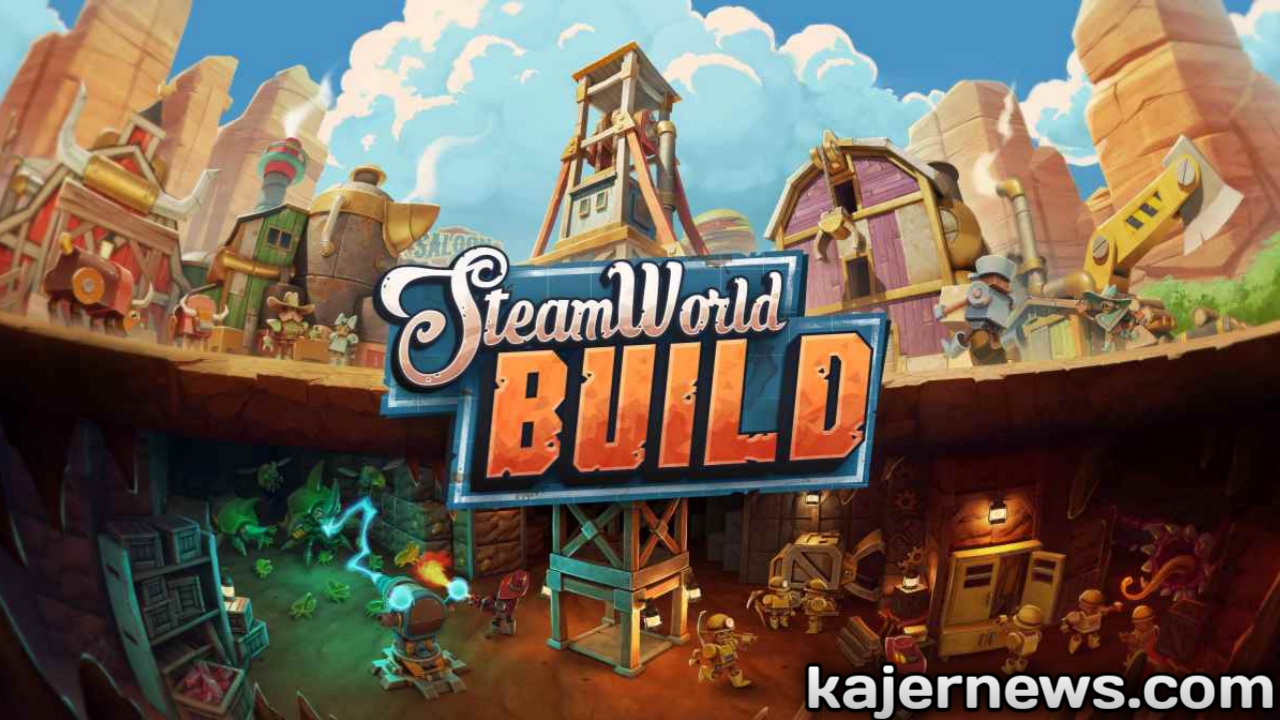Four tiers are present in the city-builder SteamWorld Build.
The SteamWorld series has always impressed me because it refuses to accept anything less than perfection. Every game takes a completely new turn, instead than picking one idea that works and going with it.
SteamWorld Heist is a chic turn-based strategy game, SteamWorld Dig is a contemporary take on Dig Dug, and SteamWorld Quest: Hand of Gilgamech is a card-based mecha-fantasy role-playing game that actually goes off the deep end.
However, the fact that each of these games is equally enjoyable and well-thought-out is what holds them all together.
With SteamWorld Build, we hope to carry on that heritage. In the most recent release of the constantly evolving franchise, players construct a bustling metropolis centred on a train station in this city-builder game.

However, in typical SteamWorld form, things don’t end there. I discovered early on in this year’s Game Developers Conference demo that the entire game is far more intricate than “steampunk SimCity.” The complete version is a sophisticated genre mash-up that incorporates elements of tower defence, city management, and strategy, drawing inspiration from a number of earlier releases. This is the type of intricate balancing act that is only truly accomplished by SteamWorld.
Behind the scenes
I believe I rapidly have a complete understanding of everything going on in SteamWorld Build as my demo starts. I begin by creating a route that branches off of a train station and adding some structures next to it.
My access to labourers via residences allows me to construct sawmills and cactus farms, among other infrastructure needed for resource harvesting. Those funds are reinvested in town construction as I develop new buildings and satisfy labour needs to maintain everyone’s satisfaction. Easy enough, huh?
I discover there’s a lot more going on behind the surface of the game as my demoist takes me further into it. Apart from overseeing a well-functioning metropolis, I also have to keep up a few subterranean mines to extract more resources and rocket ship components in order to reach the story’s final objective.
That’s when I begin to see how well Build incorporates concepts from previous SteamWorld games. In the beginning of the underground game, I build miners and give them orders to dig through mounds of rock and dirt in search of further resources. Sort of like SteamWorld Dig, but with a top-down strategy twist.
I’m taken even further into the game, where the obstacles are noticeably more numerous, just as I start to grasp the feel of it. Right now, I’m building support pillars to prevent cave-ins in a second underground mine that I oversee beneath the original one.
Down here, I frequently run upon monster colonies, which are a continual source of bugs that may ruin my well planned operation. I can create stationary weapons that will automatically attack any monsters and provide combat troops various tools to help me fight them.
It’s a tower-defense game set inside a city-builder, evoking memories of the Nintendo DS first game in the series.
I can see how much deeper the city-building goes with every step I take. By the time I make the third jump, I can develop an incredible number of buildings.
I can use rubbery mushrooms I’ve collected underground to make a plastic plant, for example, thanks to a “aristocrat” selection. In order to increase their productivity as I strive to build a city that essentially runs like a well-oiled machine while I labour in the mines, each business may also be customised with various benefits.
I’m a little surprised at how obviously complicated everything becomes at the end. Players would have to manage four levels in all in the final game, and I wondered how tough the juggling act would get by the end.
Thankfully, there are plenty of useful quality-of-life options available in SteamWorld Build to make management, well, managed. All of my many structures are listed on a menu, which also indicates which ones require attention to bring them back into balance and which ones are functioning properly.
When I need to create a new structure that calls for a variety of materials, I can see precisely what I need and click on each one to quickly manufacture it. As players progress through the multitasking operation at a more steady rate, all of that should hopefully make it much easier to understand.
Even while I enjoy what I’ve seen so far, I can’t wait to enter that more organic flow.
Some of the advanced gameplay I saw later in the demo piqued my interest, but I’d like to see how simple it is to get to that level of play on a casual basis. Its capacity to keep me informed as the complexity increases will be the true test. Should it succeed in doing so, SteamWorld Build, one of the most reliable game series, is sure to become another smash.






